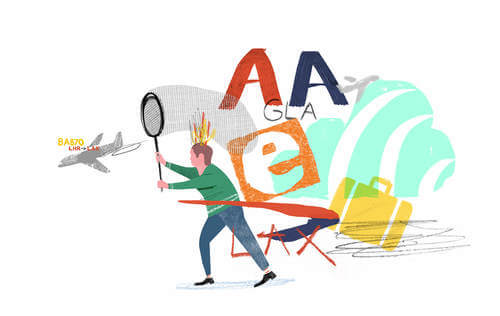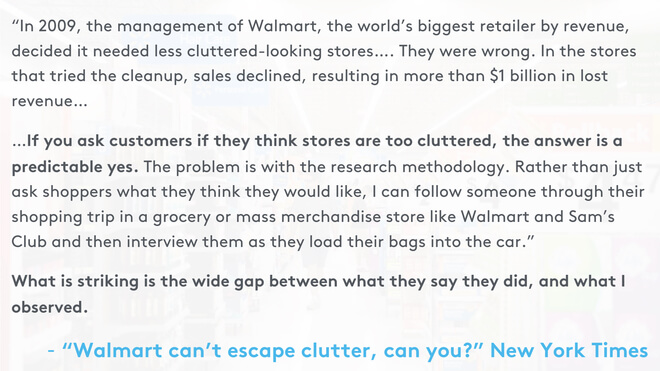The way that we book travel is broken

Right now, airlines, rail and other transport providers have an enormous opportunity to embark on more meaningful relationships with their customers through smarter use of data and better digital experiences. This requires a shift in their thinking from technology-led to an approach that is customer-centric and design-led. It means changing their priorities from short-term profit and conversion to fostering loyalty and long-term customer value.
Why? Because the way that we currently book travel is broken.
Think about the last time you booked a flight… How was it? Straightforward?
My guess is that you did something like this: you went to Kayak or Skyscanner or Google Flight search and put in some rough dates. So far, so good.
Then you found yourself scanning a very long list of options to find the cheapest fares from an airline that you recognised.
You might then have gone to that airline’s website directly, and been quoted a different fare, with no idea why it was different.
Maybe you started to think about whether you could move your trip by a few days to save money. Then you had several tabs open and several options, and after figuring out which was best, might have had to check that it worked for a travel companion. But when you went back to select your flights, the page had timed out and you had to start all over again.
You eventually picked a flight time, and now you don’t know if the price you’re being quoted is for one passenger or two, or if it’s for both outbound and return legs of your journey.
Then there are more choices and you have to pick between some obtusely-named fares: not just ‘Economy’ or ‘Business’ — no, something like Globe Trotter Value and High Flyer Pro. You have no idea what the difference is, or what’s included.
You’ll probably pick the cheapest one because, let’s face it, who’s going to pay an extra £768 each way, for two more inches of legroom and a meal which comes on real china instead of a plastic tray? After all, it’s only a seven-hour flight.
And Then! Just when you think you’re going to be able to pay and get this whole thing over and done with, here’s the page you’ve been waiting for! Add an extra bag! Express boarding! How about a hotel? Travel insurance? A special surprise for your flight? A gold-plated, chauffeur-driven car service for when you land?
You hit ‘Skip’.
You manage to enter your payment details, they charge you an extra £2.50 for using your credit card, and when the payment has processed you’re left thinking, ‘Is that it? Am I done?’ and hating yourself for having spent two months trying to find a better price, as the amount you’ve just paid is an extra £100 on the flights you saw when you first looked.
It’s bleak.
This is what real customers told us
The story above is an amalgamation of around 80 interviews with customers about how they book their flights. One thing is clear: Customers have reached the point where they expect booking travel to be an awful experience. If they are lucky, they book with an airline that is doing a slightly better job than others, but it probably will have featured at least a few of those annoyances. Time and again we heard users say, “well the travel insurance has to be there, doesn’t it?” or “Oh, it must have been my fault, I probably did something wrong”.
We heard time and again how people would browse flights on their phone but when it came to booking would need to sit down at their computer (preferably with a glass of wine) and take their time. On a small screen it’s “Too easy to make a mistake”.
There are many reasons why booking a flight feels like this. The biggest and most fundamental is this:
Most airlines use the same ticketing systems to sell direct to their customers now, that were designed as a portal for travel agent sales in the 1970s.
The way that customers behave has changed dramatically in the decades since — from booking through travel agents to buying online. But the technologies have not. Airlines might be modernising the way their online booking engines look, but are actually doing very little to address the underlying problems on the back-end.
However, the tide is beginning to turn. Low-cost airlines around the world have historically led the way in their online booking engines because they are not tied to legacy systems and are built to make the most of their direct sales. Some of them have been able to do this because they only sell tickets through their own channels or because they only sell relatively simple ticket types, with no code-sharing or complex multi-segment itineraries.
US domestic airlines, too, are starting to make fare transparency a priority: Spirit being clear about their bare-bones approach, or Southwest’s simple fare structure that always includes a bag and no change fees.
But most airlines have a long way to go. Virgin America’s responsive booking engine was one of the first to feel like it was taking a different approach, and over the course of the last year we’ve seen Swiss and Aer Lingus redesign.
But from the research we’ve done — few of them really address the biggest customer pain points that we found. They look great, they definitely work better. But is it good enough?
Three ways to improve
I care about all of this because in the last year here at Made by Many, I’ve worked for both an airline, prototyping a design-led solution for a ‘next generation’ booking engine and managing your flights, and for a leading online travel company.
The problems we uncovered are big and require business change as well as design solutions, and are not straightforward things to fix — but these are three of the principles we’ve used to guide our work:

1. Minimum viable information
The decisions that customers have to make when booking flights can be overwhelming and typically require a lot of information to be given up front. They have to know where they are going, exactly when they are going, who they’re going with, how many bags they’ll be taking, what class of travel they want… all before seeing real prices and being able to understand the cost of those decisions.
We asked, what is the minimal amount of information we need to start showing possible flight prices? What is the information you really need to make a decision? We need to break down the decision-making process and use progressive disclosure to make each decision easier and to provide clarity and reassurance at every step of the booking process.
Flights are still a big purchase for most people, and the ways airlines work is somewhat of a mystery to those who don’t fly frequently. Giving customers confidence in what they’re doing and what they’re spending their money on is vital.

2. Recognising the booking cycle
Booking flights (particularly for holidays) is not a linear journey. In reality, it’s a cycle of research, of trying different dates, times, fare type and passenger numbers. Everyone approaches this in a slightly different way. At the moment doing so often requires a user to start their search all over again every time they want to tweak one of those variables.
We challenged ourselves to looks at how a booking engine would work if a user could change anything — their dates, class, number of passengers, even destination — at any point before entering their payment details. How could we enable this natural cyclic behaviour that’s already occurring in a way that made it more efficient, less frustrating, and gives the business more chance of allowing a customer to filter their own choices and ultimately purchase a ticket.

3. Making ancillaries a service
Ancillary sales have become a key component of airlines’ revenues. Pressure on margins from increased competition and higher distribution costs means that carriers have to find new ways to maintain their bottom lines.
We couldn’t strip this part of the business out completely — but our challenge was how can we sell in a way that feels like a service, and that isn’t annoying or disruptive in the moments that a customer has an important task (like booking, or checking in) to get done.
Beyond that, how could we think about using data to make any sales opportunities more relevant and more personal? How could we ensure that they fit the context of a customer’s trip as closely as possible?
Getting to ‘customers love it’
I’m excited to see where the prototyping work that we’ve done ends up, how it will help with the procurement of better technology providers, and ultimately how it performs when it can be released to customers to book real flights.
In qualitative testing we were aiming for a simple goal: ‘customers love it’, and we definitely got there. The real test for all our work however is when it hits production, and we find out for real if the quantitative data supports everything we’ve been told by customers and the decisions we’ve made along the way. Does it increase conversion and ultimately revenue?
As an airline customer myself, I want to see the experience improved across the board. At Made by Many we don’t just build products for ourselves and, we’d love the chance to tackle more problems like this.
My current dream project? Something that ties together more tightly the online and offline experiences of flying. What can we do to make the moments before you board the plane better? What about during the flight itself? And how about when you land in an unfamiliar country?
If you have something you’d like to talk to us about, get in touch at letsmeet@madebymany.co.uk.
Illustrations by Sam Walker
Continue reading
Open access! A new digital direction for the V&A
A dynamic new digital strategy for the V&A Museum yields its first fruits today with the release of version 1.0 of a redesigned and rebuilt web platfo...
Billion dollar interviews
The world’s largest retailer discovered one quick to lose $1 billion in revenue, simply ask consumers what they want and then give it to them. As the New ...
Asking the big questions about innovation labs
Innovation Labs are a hot topic in business at the moment — but what’s the best way to launch and run one? What are the biggest challenges to success, the...


